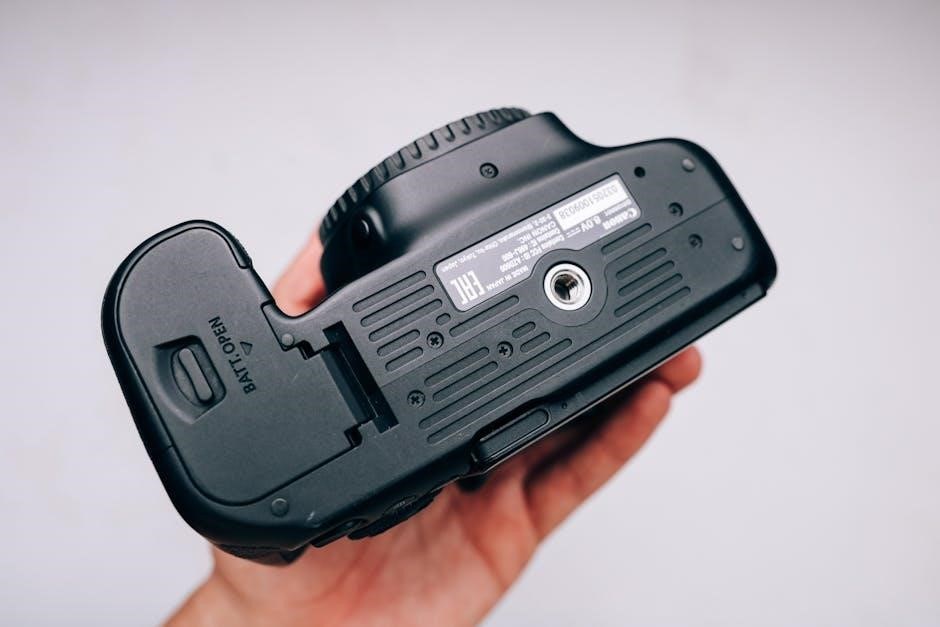The Cheat Sheet by Sarah Adams is a heartwarming romantic comedy exploring the slow-burn romance between best friends Bree Camden and NFL star Nathan Donelson. Popular on TikTok, the book is available in PDF, EPUB, and other formats, offering a lighthearted yet emotional journey of unspoken feelings and personal growth.
Background and Context of the Book
The Cheat Sheet by Sarah Adams is set against the backdrop of a long-standing friendship between Bree Camden and Nathan Donelson, exploring themes of unspoken feelings and personal growth. The story transitions seamlessly from their high school days to adulthood, highlighting the challenges of navigating the friend zone. Adams’ writing style blends humor with emotional depth, making the book relatable and engaging. The novel gained significant popularity on platforms like TikTok, where its slow-burn romance resonated with readers. Available in formats such as PDF, EPUB, and more, the book has become a favorite in the romantic comedy genre, offering a lighthearted yet poignant tale of love and self-discovery.
The Concept of a “Cheat Sheet” in Sports and Its Relevance to the Story
In sports, a “cheat sheet” refers to a quick-reference guide, often used by quarterbacks to jot down plays on their wristbands. This concept mirrors the strategic yet spontaneous nature of Nathan Donelson’s NFL career. In The Cheat Sheet, Sarah Adams cleverly extends this metaphor to the characters’ personal lives, particularly their unspoken romantic feelings. Just as a cheat sheet helps navigate game strategies, the characters rely on their own emotional guides to decode each other’s hearts. This parallel underscores the book’s themes of hidden emotions and the challenges of transitioning from friendship to romance, making the title both apt and symbolic of the story’s essence.

Book Overview
The Cheat Sheet by Sarah Adams is a romantic comedy that follows Bree Camden and NFL star Nathan Donelson, best friends since high school, as they navigate unspoken feelings and a slow-burn romance.
The Cheat Sheet by Sarah Adams is a lighthearted romantic comedy that follows the journey of Bree Camden and Nathan Donelson, best friends since high school. Bree, now running her own dance studio, harbors secret feelings for Nathan, an NFL star, while he struggles with his own hidden emotions for her. Their friendship is put to the test as they navigate the challenges of unspoken love, career ambitions, and the fear of losing their lifelong bond. The story explores themes of self-discovery, friendship, and the slow-burn tension of moving beyond the friend zone, offering a heartwarming and humorous take on love and relationships.
Key Themes: Friendship, Unspoken Feelings, and Personal Growth
The Cheat Sheet by Sarah Adams delves into the intricate dynamics of friendship, exploring the unspoken emotions that often accompany deep connections. Bree and Nathan’s relationship serves as the cornerstone, highlighting the challenges of harboring secret feelings while maintaining a lifelong bond. The novel also emphasizes personal growth, as both characters navigate their individual journeys—Bree pursuing her passion for dance and Nathan balancing his NFL career with his inner turmoil. Through lighthearted yet emotionally charged moments, the story underscores the universal struggle of expressing love and the courage required to transcend the friend zone. These themes resonate with readers, offering a relatable and heartfelt exploration of love, friendship, and self-discovery.
Genre: Romantic Comedy and Its Appeal
The Cheat Sheet seamlessly blends humor, heart, and relatable scenarios, making it a standout in the romantic comedy genre. Sarah Adams’ lighthearted storytelling and witty dialogue create a charming narrative that captivates readers. The slow-burn romance between Bree and Nathan adds emotional depth, while the sports backdrop introduces a fresh dynamic. This book’s appeal lies in its ability to balance lighthearted moments with genuine emotional struggles, making it a delightful read. Its themes of unspoken feelings and personal growth resonate widely, attracting fans of romantic comedies seeking a heartfelt, engaging story. The novel’s charm and relatability have made it a favorite among readers, particularly on platforms like TikTok, where it has gained significant popularity.

Main Characters
Bree Camden and Nathan Donelson are the heart of the story. Bree, a passionate dancer chasing her studio dreams, and Nathan, an NFL star, share a deep, unspoken connection, driving the narrative’s emotional core.
Bree Camden: Her Dreams and Struggles
Bree Camden is a vibrant and ambitious young woman, deeply passionate about dance. Her dream of opening her own studio fuels her determination, but it’s not without challenges. While her professional aspirations take center stage, her personal life is marked by unrequited love for her best friend, Nathan Donelson. Bree’s journey is one of self-discovery, as she navigates the complexities of her feelings and the pressures of adulthood. Her relatable struggles and resilience make her a compelling and endearing character, adding depth to the story’s romantic and emotional layers. Through her, Sarah Adams captures the essence of chasing one’s passion while confronting the uncertainties of love and friendship.
Nathan Donelson: The NFL Star and His Hidden Feelings

Nathan Donelson is a charming and accomplished NFL quarterback, admired by fans and the media alike. Despite his outward confidence and success, he harbors unspoken romantic feelings for his best friend, Bree Camden, which have lingered since high school. His struggle to express these emotions adds depth to his character, revealing a vulnerable side beneath his charismatic facade. Nathan’s journey explores the challenges of balancing a high-profile career with personal desires, making him a relatable and endearing figure in the story. His hidden feelings and internal conflict drive the narrative, blending humor and heartache in a way that resonates with readers.
Bree and Nathan’s friendship is a cornerstone of The Cheat Sheet, rooted in trust, mutual respect, and a deep emotional connection. Their bond, formed in high school, has endured through life’s ups and downs, with each supporting the other’s passions—Bree’s dance studio and Nathan’s NFL career. Their friendship is filled with lighthearted moments, shared memories, and a strong sense of loyalty. However, the unspoken romantic feelings between them create a subtle tension, adding complexity to their relationship. This dynamic evolves as they navigate the challenges of adulthood, making their friendship both a source of comfort and a catalyst for change. Their interactions are authentic, relatable, and pivotal to the story’s progression. The Cheat Sheet follows Bree Camden and Nathan Donelson, high school friends turned adults, as they navigate unspoken romantic feelings, personal ambitions, and the challenges of adulthood, leading to a heartfelt journey of self-discovery and love. The Cheat Sheet seamlessly transitions from the nostalgic backdrop of high school to the bustling realities of adulthood, exploring the evolution of Bree Camden and Nathan Donelson’s relationship. The story begins with their formative years in high school, where their friendship is forged amidst shared experiences and mutual support. As they grow older, the setting shifts to Bree’s vibrant dance studio and Nathan’s high-profile NFL career, reflecting their individual ambitions and the pressures of adulthood. The contrast between their small-town roots and the glitz of professional sports highlights the passage of time and the complexities of maintaining a lifelong friendship. This dynamic backdrop underscores the emotional journey of two characters navigating love, identity, and the challenges of growing up. The central conflict in The Cheat Sheet revolves around Bree Camden and Nathan Donelson’s long-standing friendship, which has become a comfortable yet unfulfilling routine. Both characters secretly harbor romantic feelings for each other but struggle to express them, fearing it might ruin their friendship. This unresolved tension creates a palpable emotional conflict, as they navigate the challenges of unspoken love and the fear of rejection. The friend zone dilemma is further complicated by their differing career paths and the societal pressures surrounding Nathan’s NFL status. This internal and external conflict drives the story’s progression, keeping readers invested in their journey toward potential romance and self-discovery. The story gains momentum as Bree and Nathan begin to confront the unspoken emotions they’ve harbored for years; A series of awkward yet endearing moments highlight the growing tension between them. Bree’s internal struggle to balance her friendship with her romantic feelings intensifies, while Nathan’s reserved nature masks his own hidden desires. A pivotal scene where they almost confess their feelings but pull back creates suspense. Their relationship is further complicated by Nathan’s high-profile career and Bree’s focus on her dance studio. These events escalate the emotional stakes, setting the stage for a dramatic turning point in their friendship. The climax unfolds as Bree and Nathan confront their long-hidden feelings, marking a turning point in their relationship. A heartfelt confession breaks the tension, allowing them to finally express their love. Despite initial hesitations and fears of ruining their friendship, they embrace the opportunity to explore romance. The resolution brings emotional closure, showcasing their growth and commitment to each other. Their journey from friends to lovers is both satisfying and realistic, leaving readers with a sense of joy and fulfillment. This pivotal moment highlights the importance of taking risks in love, proving that it’s never too late to pursue true feelings. The novel explores themes of friendship, self-discovery, and the challenges of transitioning from platonic to romantic relationships, highlighting personal growth and the courage to express true feelings. The Cheat Sheet masterfully portrays the delicate transition from friendship to romance, capturing the tension and emotional depth as Bree and Nathan navigate their unspoken feelings. Their relationship evolves naturally, with moments of subtle connection and missed opportunities, creating a believable and relatable slow-burn dynamic. The novel highlights the challenges of risking a cherished friendship for the possibility of love, making their journey both poignant and engaging. Sarah Adams weaves humor and heartfelt moments, ensuring readers are invested in their emotional growth and the ultimate revelation of their true feelings. The Cheat Sheet delves into themes of self-discovery and personal growth as Bree Camden and Nathan Donelson navigate their lives and feelings. Bree, pursuing her passion for dance, learns to embrace her ambitions while confronting her unspoken emotions for Nathan. Nathan, as an NFL star, grapples with balancing fame and his true feelings, revealing a deeper side to his character. Through their journeys, Sarah Adams highlights the importance of self-awareness and the courage to express emotions, making their growth both relatable and inspiring. The novel emphasizes how personal evolution can lead to profound connections and happiness, resonating with readers seeking stories of genuine development and emotional depth. The Cheat Sheet is available in PDF, EPUB, and other digital formats. Readers can download or purchase it from platforms like Litres or send it to their Kindle or Kobo eReader for convenient reading. The Cheat Sheet by Sarah Adams is widely available in various digital formats, including PDF, EPUB, and more, ensuring accessibility for all e-readers. The PDF version can be easily downloaded from platforms like Litres or shared via services like z-lib.org. EPUB files are also accessible, making it compatible with devices such as Kindle and Kobo. Additionally, online tools allow users to convert formats if needed, ensuring readers can enjoy the book on their preferred device. The digital formats are convenient for on-the-go reading, and the book’s popularity on platforms like TikTok has further boosted its availability across different ebook platforms. The Cheat Sheet by Sarah Adams is readily available for download or purchase across various platforms. Readers can find the book in PDF, EPUB, and other digital formats on popular ebook services like Litres, z-lib.org, and other online libraries. Additionally, platforms such as Amazon, Barnes & Noble, and Kobo offer the book for purchase. For those preferring free access, some websites provide downloadable versions, though supporting the author by purchasing the original copy is encouraged. The book’s widespread availability ensures fans of romantic comedy can easily access and enjoy this heartwarming friends-to-lovers story. The Cheat Sheet by Sarah Adams has gained significant popularity, especially on TikTok, with readers praising its charming and emotional friends-to-lovers storyline. Fans of romantic comedies and authors like Emily Henry and Tessa Bailey have embraced the book, making it a beloved read in the genre. The Cheat Sheet has garnered high ratings and glowing reviews from readers. Many praise its emotional depth, relatable characters, and the sweet, slow-burn romance between Bree and Nathan. Fans on platforms like TikTok and Goodreads highlight the book’s ability to balance humor with heartfelt moments, making it a standout in the romantic comedy genre. With over 4,000 positive reviews, readers have fallen in love with the story’s genuine portrayal of friendship evolving into something more. The lighthearted tone and realistic dialogue have resonated deeply, making it a favorite among fans of authors like Emily Henry and Tessa Bailey. The book’s success lies in its authentic and uplifting take on love and relationships. The Cheat Sheet gained significant traction on TikTok, becoming a viral sensation among book lovers. Users praised its slow-burn romance and relatable characters, often sharing clips and reviews. The book’s lighthearted tone and emotional depth resonated with readers, making it a favorite in the #BookTok community. Many creators highlighted its authentic portrayal of unspoken feelings, while others shared aesthetic edits inspired by Bree and Nathan’s journey. The novel’s popularity on TikTok contributed to its widespread success, with readers eagerly recommending it to others. Its viral status also boosted its visibility, making it a must-read for fans of romantic comedies and friends-to-lovers stories. The book’s engaging storyline and heartfelt moments continue to captivate audiences across social media platforms. Sarah Adams is a renowned author known for her engaging romantic comedies. Her writing style blends humor with heartfelt moments, creating relatable characters and emotional depth. Adams’ works, including The Cheat Sheet and When in Rome, have captivated readers with their authentic storytelling and memorable dialogues. Her ability to explore complex emotions while maintaining a lighthearted tone has made her a favorite among fans of contemporary romance. Sarah Adams is a contemporary romance author celebrated for her warm, relatable storytelling. Her writing often focuses on themes of friendship, unspoken feelings, and personal growth, resonating deeply with readers. With a background that blends humor and heartfelt moments, Adams’ style creates vivid characters and emotional depth. Her ability to craft slow-burn romances, as seen in The Cheat Sheet, highlights her talent for exploring complex emotions while maintaining a lighthearted tone. This approach has solidified her place as a beloved author in the romantic comedy genre, earning her a loyal fanbase and critical acclaim. Beyond The Cheat Sheet, Sarah Adams has captivated readers with other charming works. One of her notable books is When in Rome, a delightful romantic comedy that continues her tradition of blending humor and heartwarming moments. Adams’ writing style, which emphasizes relatable characters and emotional depth, has endeared her to fans of contemporary romance. Her books often explore themes of love, friendship, and self-discovery, resonating with readers seeking uplifting stories. Fans of The Cheat Sheet will find similar joy in her other works, which are widely available in formats like PDF, EPUB, and more, making her stories accessible to a global audience. For fans of The Cheat Sheet, try People We Meet on Vacation by Emily Henry or Tools of Engagement by Tessa Bailey for similar friends-to-lovers rom-com vibes. If you enjoyed The Cheat Sheet, explore more charming “friends-to-lovers” tales. People We Meet on Vacation by Emily Henry offers a witty, emotional journey of unspoken feelings. Tessa Bailey’s Tools of Engagement blends humor with heartfelt romance, while Love Her or Lose Her delivers a passionate story of second chances. These books, like The Cheat Sheet, masterfully capture the tension and vulnerability of transitioning from friendship to romance. Fans of Sarah Adams’ lighthearted yet poignant style will find these stories equally captivating, with relatable characters and uplifting endings that celebrate love and growth. Fans of Sarah Adams’ heartfelt storytelling will adore books by authors like Emily Henry and Tessa Bailey. Emily Henry’s People We Meet on Vacation captivates with its witty dialogue and emotional depth, while Tessa Bailey’s Tools of Engagement and Love Her or Lose Her deliver passionate, humor-filled romances. These authors share a similar charm, blending relatable characters, lighthearted humor, and poignant emotional journeys. Like The Cheat Sheet, their works explore themes of love, friendship, and self-discovery, making them perfect reads for anyone who enjoys romantic comedies with a touch of vulnerability and authenticity.The Dynamics of Bree and Nathan’s Friendship

Plot Summary
The Setting: High School to Adulthood
Conflict: The Friend Zone Dilemma
Rising Action: Discovering Hidden Feelings
Climax and Resolution: Breaking Out of the Friend Zone

Themes and Messages
Friendship to Romance: A Slow-Burn Journey
Self-Discovery and Personal Growth

Book Formats and Availability
PDF, EPUB, and Other Digital Formats
Where to Download or Purchase the Book

Reception and Reviews
Reader Ratings and Feedback
Popularity on Platforms Like TikTok

About the Author
Sarah Adams: Background and Writing Style
Other Works by Sarah Adams

Related Books and Recommendations
Similar Romantic Comedies and “Friends-to-Lovers” Stories
Books by Authors Like Emily Henry and Tessa Bailey


























































































